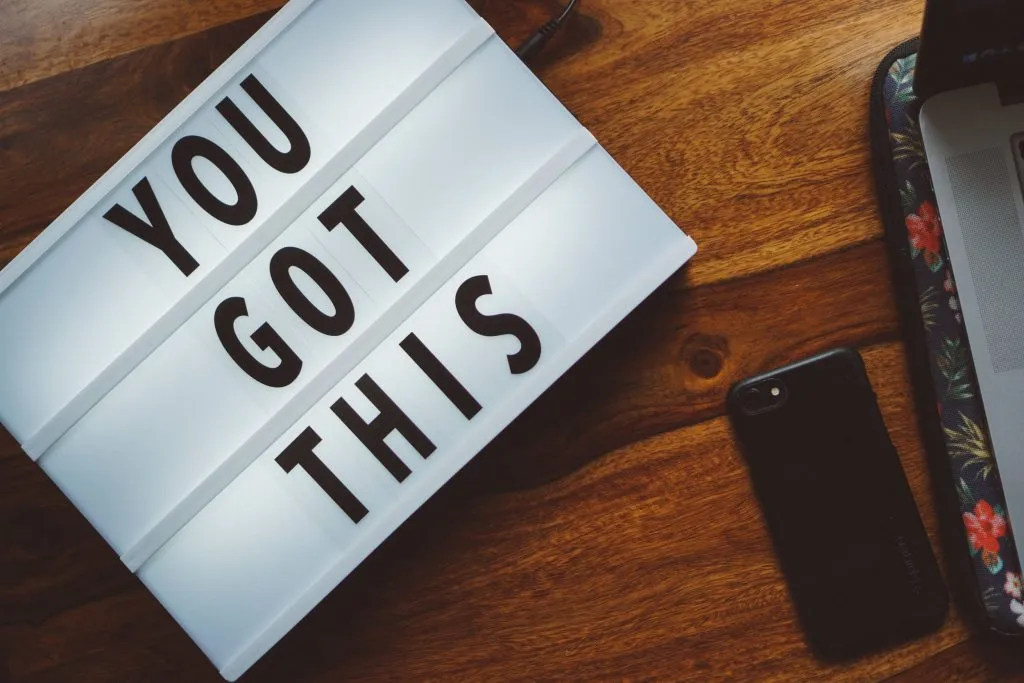Just thinking about budgeting for anxious people is a trigger. But don’t worry because we are going to break it down together.
If you had extra money every month and weren’t tight on finances, all of a sudden, budgeting wouldn’t be so stressful. This budgeting guide will teach you how to identify wasted money in the hope that you’ll end up with less anxiety surrounding your finances. Budgeting with anxiety doesn’t have to be scary.

I share products I love with you through affiliate links, which means if you buy something through one of these links, I get a small commission at no extra cost to you.
You will notice that I don’t have any flashy budgeting worksheets in this blog.
That’s not because I don’t know how to make a budgeting worksheet. In fact, I have a budgeting worksheet for students in my Homeowner Hustle E-Course.
I’m not including a budgeting worksheet because anxious people would never look at it. Budgeting for anxious people can’t be so formal. These are the baby steps to budgeting that will help reduce the anxiety surrounding your money.
My goal is not to create one more document in the budgeting process that you’ll ultimately avoid looking at.
Step One
Money Coming In
This step will range from super simple to fairly complicated depending on how you earn your money.
If you work for a traditional employer you will have a set payment schedule. Your paychecks typically come in bi-weekly, semi-monthly, or monthly.
Salaried employees will know exactly how much money is expected to come in on those dates. Hourly employees have it a bit harder as you have to estimate how many hours you will work during each pay period. As an hourly employee, you should budget based on the lowest number of hours the employer has agreed to schedule you.

Self-employed people will need to thoroughly analyze their business trends to determine their money coming in. Let’s say you have $120,000 per year in net income but $40,000 of that comes in a 2 month period. You can’t go buck wild acting like you just made $20,000 in a month. You have to save it while still only paying yourself $10,000 per month.
By the end of this step, you should have a very accurate estimate of the amount of money that will hit your bank account each month. The amount that gets deposited into your bank account is also referred to as your net income total.
Write your monthly income on a sheet of paper. Clearly label your paper as MONEY COMING IN. Set the paper aside for later.
Step Two
Fixed Expenses
Now we need to make a centralized list of your absolute must pay fixed expenses for every month. A fixed expense is one that stays the same price from month to month.

Every person’s expenses will be different, but they will generally fall into the same categories.
- HOUSING (rent or mortgage)
- TRANSPORTATION (car payment or bus pass)
- INSURANCE (health, renter’s, homeowners, car, life)
- DEBT (credit cards, student loans, loans)
- CHILD (daycare, medication, after-school program)
Write your monthly must pay fixed expenses on a new sheet of paper. Clearly label your paper as MUST PAY FIXED EXPENSES. Set the paper aside for later.
Step Three
Variable & Non-Essential Expenses
Usually, people with anxiety are okay dealing with steps one and two. Step three is where budgeting for anxious people really takes a self-destructive turn.
As an anxiety sufferer myself I know all too well how overwhelming this step is. But the alternative of not buckling down to do it is far far worse.

The reason variable expenses are so difficult for anxious people to plan for, is that they are ever changing. An anxious person hears grocery budget and has no freaking clue what they currently spend or should spend on groceries. When the options are too wide open an anxious person shuts down.
- FOOD (groceries and eating out)
- UTILITIES (electric, gas, garbage, sewer, water, internet, cell phone, landline)
- SUBSCRIPTIONS (cable, Netflix, Hulu, Amazon)
Write your monthly variable and non-essential expenses on a new sheet of paper. Clearly label your paper as VARIABLE & NON-ESSENTIAL EXPENSES. Set this paper aside for later. At this point, you should have three sheets of paper.
Step Four
Leaks
A vast majority of transactions are completed using a debit or credit card. Very few people use cash nowadays.
If you’re part of the majority who uses debit and credit cards open the last monthly statement for every card you own. Look at every single transaction on every single card.
Do you notice any charges you don’t recognize? Or maybe you do recognize them but you’ve been meaning to cancel that service months ago and never got around to it.
Are there recurring places you spend money but don’t need to?
There is usually money being spent that honestly just isn’t given a second thought. Stress causes spending habits that end up causing more stress.

Your first goal should be to identify five leaks in your budget that you’re going to stop. As an example, some of my leaks when I started budgeting were: cable, Starbucks, lottery tickets, eyelash extensions, and spray tanning.
Write down the five ongoing wasteful expenses you are going to cut out of your budget. Clearly label your paper as LEAKS. Put this paper in your purse or wallet or with your cell phone.
Step Five
Plan
Guess what? That’s budgeting!
Now it’s time to take action. That LEAKS paper you put with your cell phone is your first battle. Bring that paper everywhere with you until you are confident those money wasters are eliminated. If you need to call or log into an account to cancel a leak, don’t put it off. Just get it done.
Hang your three pieces of paper on the wall. Put the MONEY COMING IN paper on top, followed by the two expenses sheets below.
Budgeting for anxious people is much less stressful when you take it one step at a time. High five yourself every step of the way.
After the leaks are stopped you can start strategizing how to reduce your expenses from steps two and three. You’ll see a future blog post detailing how to reduce your expenses. As you look at the variable and non-essential expenses on your wall everyday, you may soon realize there are other things you can live without in addition to the first five that you eliminated.
Budgeting for Anxious People

A major source of stress for anxious people is the unknown. It’s easier for us to ignore the problem than face it head on. Instead of formal budgeting worksheets you are simply looking at regular pieces of paper that you’ve written on.
Now that you see the reality of the situation, surprisingly it becomes less scary.
If in fact there are more expenses than income, well you’ll have to wait for my future blog on that topic.


